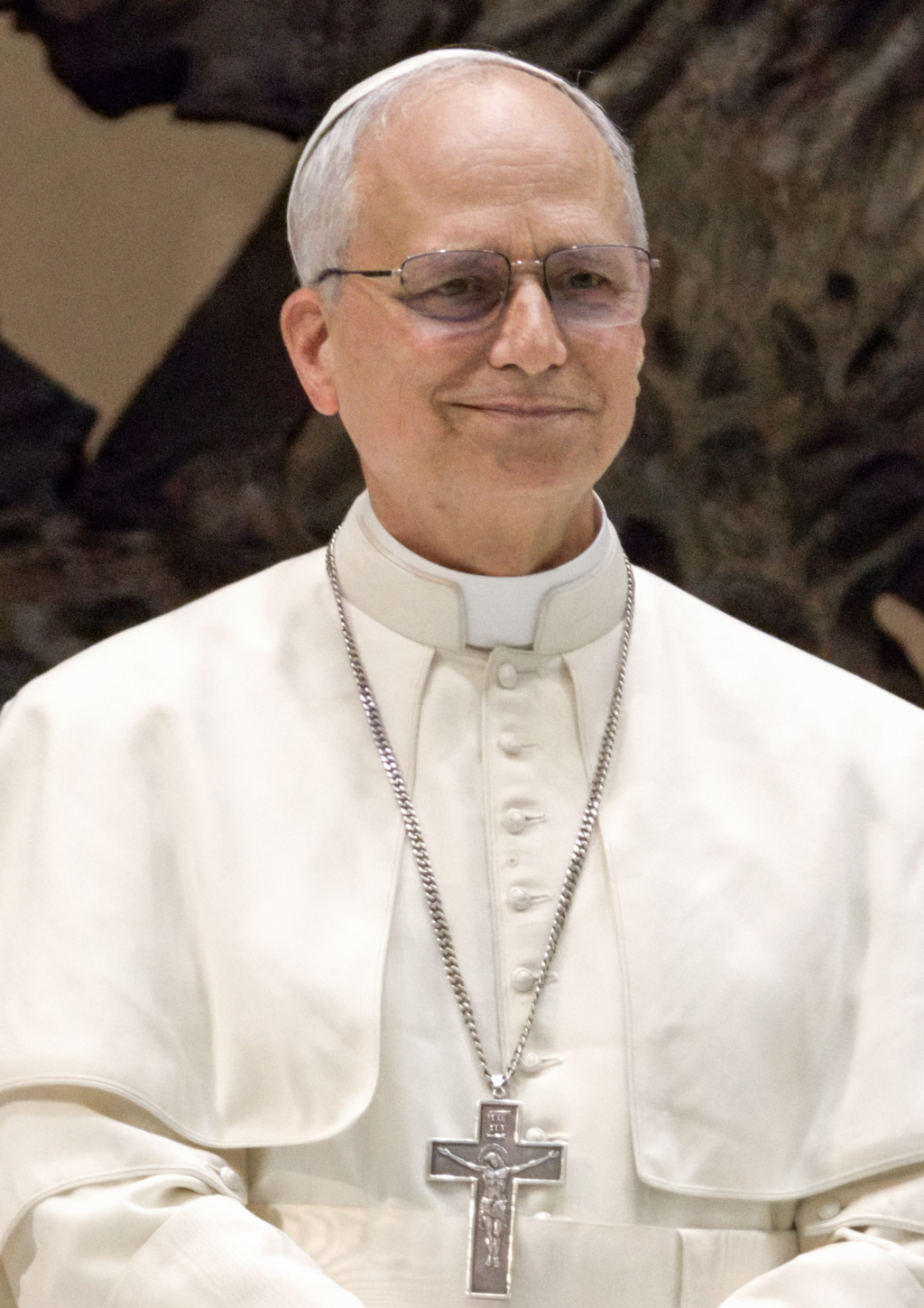
The hourglass is running out!
From the moment that the Senior Cardinal Dean stood on the central balcony of St Peter’s Basilica and announced, in time honoured tradition, ‘Nunto vobis gaudium magnum: Habemus Papam!’ Leo XIV became a household name across the globe, writes Paul Hyett.
Across the 2,000 years of the papacy, Leo has been the fifth most popular adopted name; there having been 23 Johns, 16 Gregory and Benedicts, fourteen Clements and thirteen Leos among the 266 past Popes.
In following the tradition of assuming a regnal name, as has been the custom since Pope John II’s papacy in 533 AD, Cardinal Robert Francis Prevost has taken the opportunity to signal the spiritual path and priorities of his pontificate: Pope Leo XIII had championed the rights of workers and fair wages during the Industrial Revolution, advocating labour unions and condemning the exploitation of the working classes. Leo XIV has thus clearly signalled, at a time of tremendous socio-political change, that he will be a voice of sympathy and support for the disadvantaged, the lonely, and the lost.
The name Leo also symbolises strength and courage and in that vein the new Pope has, seemingly, been quick to criticise President Trump, who he has apparently named repeatedly in a symbolic warning to America, and to us all, that could be viewed on YouTube, albeit it has now been "taken down", no doubt as a consequence of pressure from the Vatican.
Titled ‘The hour-glass is running out’ (beware of bogus copies of that bogus video), this was a message for our time: it was extraordinarily powerful, being structured around seven ‘revelations’, each involving President Trump. There was, nonetheless, an oft-repeated qualification that the message was essentially not for, or about the President, but instead for the USA which it suggested must, in its role as leader of the free world, re-set its values. I would have commended this piece to you because of its value as a humanitarian message at a time of growing international crises - but alas it's vanished into the ether.
However, persuasive and timely as the video might have been, and plausible as the voiceover may have sounded, it was apparently just one (albeit probably the best) of a series of fakes created with the aid of AI, and falsely attributed to the Papacy. We live in an increasingly confused and confusing world where any seeming reality can so quickly become a virtual quicksand – and vice-versa. A world where, as Bob Dylan sang, ‘black is the colour, and none is the number’. The phoney "Pope Leo" video reminded me of this line from Dylan’s haunting and symbolically rich song ‘A Hard Rain’s A-Gonna Fall’ where he used poetic imagery to express a powerful sense of foreboding and moral urgency.
The obvious interpretation of the ‘Hard Rain’ line was that it referenced impending nuclear war (Dylan first performed this song at the Carnegie Hall on 22 September 1962 and the Cuban missile crisis took place in October that year). However, Dylan later made clear that he had merely intended to focus attention on the growing social, political and environmental crises that then threatened to overwhelm both America and the wider global community.
Powerful as his songs and imagery were, and irritating as his messaging may have been to successive presidents, Dylan was essentially an entertainer and performer. In contrast, Pope Leo XIV represents some 1.4 billion baptized Catholics – that is approaching 20 per cent of the world’s population – within the world’s largest Christian church. So any message that Pope Leo may in reality choose to send is likely to have profound social and political impact.
Many of course argue that the church, in all its guises, should stay clear of politics, but that view is from time to time tested, for example in a UK context when Archbishop Robert Runcie endorsed Faith in the City – A Call for Action by Church and Nation.
Published in 1985 by the Church of England Archbishop’s Commission on Urban Priority Areas, its essential message was that both church and government had a moral duty to respond to the poverty, injustice, and social breakdown that was (then and arguably still now) affecting inner cities and deprived communities in the UK.
Framing social justice as a moral and spiritual issue, the report called on both the Church and the nation to engage more actively in tackling the causes of poverty, not just its symptoms. Of great concern to the then Conservative government, it also called on the Church to go beyond charity and campaign for the real socio-economic structural changes that would be necessary in generating a fairer society.
Some say that it ultimately called for a re-calibration of the New Jerusalem Movement, as inspired by the Beveridge report of 1942, that had laid the foundations for Britain’s Welfare State.
Even earlier, back in 1932 during his second period of office as Chancellor of the Exchequer, my favourite Prime Minister had argued that an independent commission should be established to oversee relief for those for whom there would never be work. Prescient in his realisation that the accelerating mechanisation of both farming and industrial production would inevitably demand efforts ‘to make as tolerable as possible the lives of men and women who were likely to stay unemployed . . .perhaps for life’, Neville Chamberlain argued that ‘opportunities (were) needed for education, training, voluntary occupation, and recreation’.
Fast forward to Michael Sandel’s publication Tyranny of Merit, where he argues for the dignity of the right of all to at least contribute within our society, and we can see the social damage consequent on reductions of work opportunities across all sectors – recently including a plethora of white-collar jobs at risk to AI. The model of full employment must now be recognised as an absurd myth against which we should accept that the traditional socio-economic model of salary and wage being linked to work is well and truly past.
How we deal with this challenge is an area of great debate. At one extreme new models of settlement are emerging through gated communities and even ‘controlled access’ townships, perhaps more properly described as forts: places which offer safe haven for the wealthy, against which the traditional cities and suburbs are abandoned and left to the poor, to the deprived, and to the despairing.
At the other extreme there is the case for re-modelling our socio-economic framework and re-purposing our townships based on re-distributive policies that seek, once and for all, to sever the relationship between work, as traditionally understood, and the current frameworks for sharing of resource and reward.
This debate has profound implications for architecture, urban design and planning each of which inevitably respond to the socio-economic climates and political directions of the day. Proof of that is only too evident across the decades of reporting by the Architects’ Journal: since 1895, perhaps more than any other magazine, it has charted the themes and directions of architectural discourse.
Indeed, its editorial content, project reviews, and architectural criticism have served as a lens to reveal the wider societal shifts and what they have meant for architecture, and all those who deliver it. Witness for example the AJ’s recent coverage around issues such as inclusion, gender, race and identity; or its reporting across three decades of the eco-sustainability debate; and in earlier times its coverage of state-funded housing and its decline, the impact of the 1970s oil crisis on state-funded building programmes, and debates about procurement and design-and-build.
So when a quasi-Pope warns America, through a hoax video, that it is locked in a struggle for its ‘heart’; or a very real Prime Minister warns on the eve of the 2025 Labour Party conference that the struggle is now on for the very ‘soul and heart’ of the nation, the architectural and planning professions can expect real friction.
Prepare to buckle up, and make a difference: the heart of the nation will, as ever, be reflected in the architecture that we make.
Founder Partner






